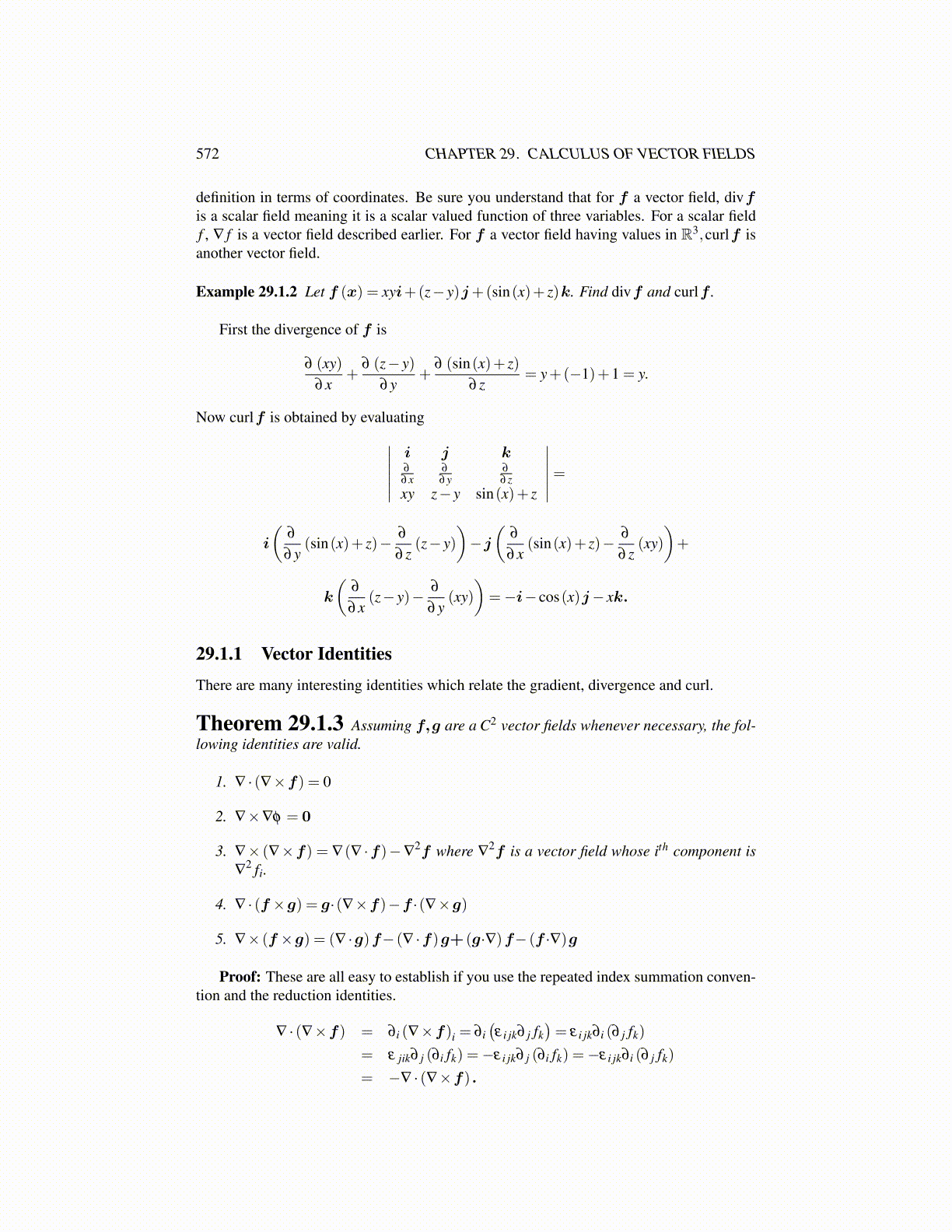
572 CHAPTER 29. CALCULUS OF VECTOR FIELDS
11. Show that if ∇2uk = 0 for each k = 1,2, · · · ,m, and ck is a constant, then
∇2
(m
∑k=1
ckuk
)= 0
also.
12. In Theorem 29.1.5, why is ∇2(
ε |x|2)= 2nε?
13. Using Theorem 29.1.5, prove the following: Let f ∈ C (∂U) ( f is continuous on∂U .) where U is a bounded open set. Then there exists at most one solution u ∈C2 (U)∩C
(U)
and ∇2u = 0 in U with u = f on ∂U . Hint: Suppose there are two
solutions ui, i = 1,2 and let w = u1 −u2. Then use the maximum principle.
14. Suppose B is a vector field and ∇×A=B. Thus A is a vector potential for B.Show that A+∇φ is also a vector potential for B. Here φ is just a C2 scalar field.Thus the vector potential is not unique.
29.3 The Divergence TheoremThe divergence theorem relates an integral over a set to one on the boundary of the set. Itis also called Gauss’s theorem.
Definition 29.3.1 A subset V of R3 is called cylindrical in the x direction if it is ofthe form
V = {(x,y,z) : φ (y,z)≤ x ≤ ψ (y,z) for (y,z) ∈ D}
where D is a subset of the yz plane. V is cylindrical in the z direction if
V = {(x,y,z) : φ (x,y)≤ z ≤ ψ (x,y) for (x,y) ∈ D}
where D is a subset of the xy plane, and V is cylindrical in the y direction if
V = {(x,y,z) : φ (x,z)≤ y ≤ ψ (x,z) for (x,z) ∈ D}
where D is a subset of the xz plane. If V is cylindrical in the z direction, denote by ∂V theboundary of V defined as the points of the form (x,y,φ (x,y)) ,(x,y,ψ (x,y)) for (x,y) ∈ D,along with points of the form (x,y,z) where (x,y) ∈ ∂D and φ (x,y) ≤ z ≤ ψ (x,y). Pointson ∂D are defined to be those for which every open ball contains points which are in D aswell as points which are not in D. A similar definition holds for ∂V in the case that V iscylindrical in one of the other directions.
The following picture illustrates the above definition in the case of V cylindrical in thez direction. Also labeled are the z components of the respective outer unit normals on thesides and top and bottom.